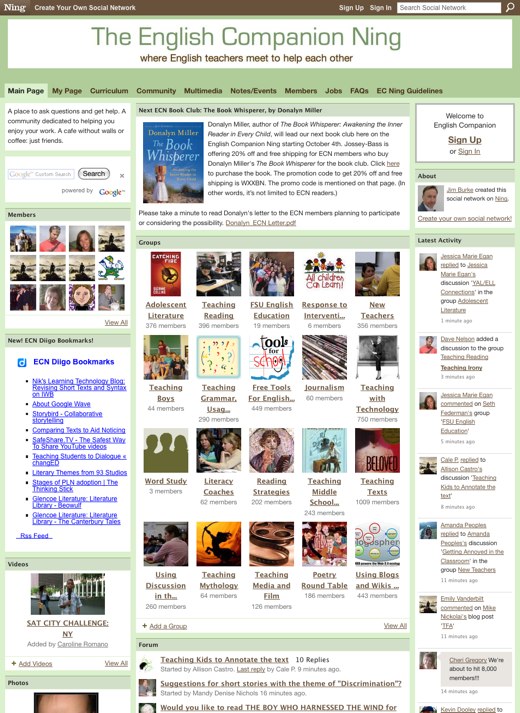 Social Networking opens up many doors to allow users to learn from others and share information in many different areas of interest. Today, I explored the Ning social networking system, signed up, and even joined a community forum. The group that I found to be of professional interest was the English Companion.
Social Networking opens up many doors to allow users to learn from others and share information in many different areas of interest. Today, I explored the Ning social networking system, signed up, and even joined a community forum. The group that I found to be of professional interest was the English Companion. 
The English Companion is designed to help English Teachers and even has specific forums that teachers can join, such as teaching writing, new teachers, and journalism, to name a few. Because I have an invested interest in Creative Writing and hope to teach this subject one day, I joined the Creative Writing Forum. When I perused this social network, I found a teacher wanted to motivate her students to write by providing them with opportunities to become published. She was unsure of how to do this, and many members offered some great advice on sites and publishing grups/companies that she could use for her students. I thought this would be a great idea as students who are proud of their work would want to share it with others.
In the future, I could use the English Companion if I did have any questions regarding how to teach a certain component of the English Curriculum, how to motivate students, and even how to make a boring topic more interesting. With thousands of members and hundred belonging to each specific group, I will be sure to receive at least some help!
Visit Ning and explore a social network that might interest you:
http://ning.com
-Or- Visit the English Companion and see how helpful it might be for you!
http://englishcompanion.ning.com/

